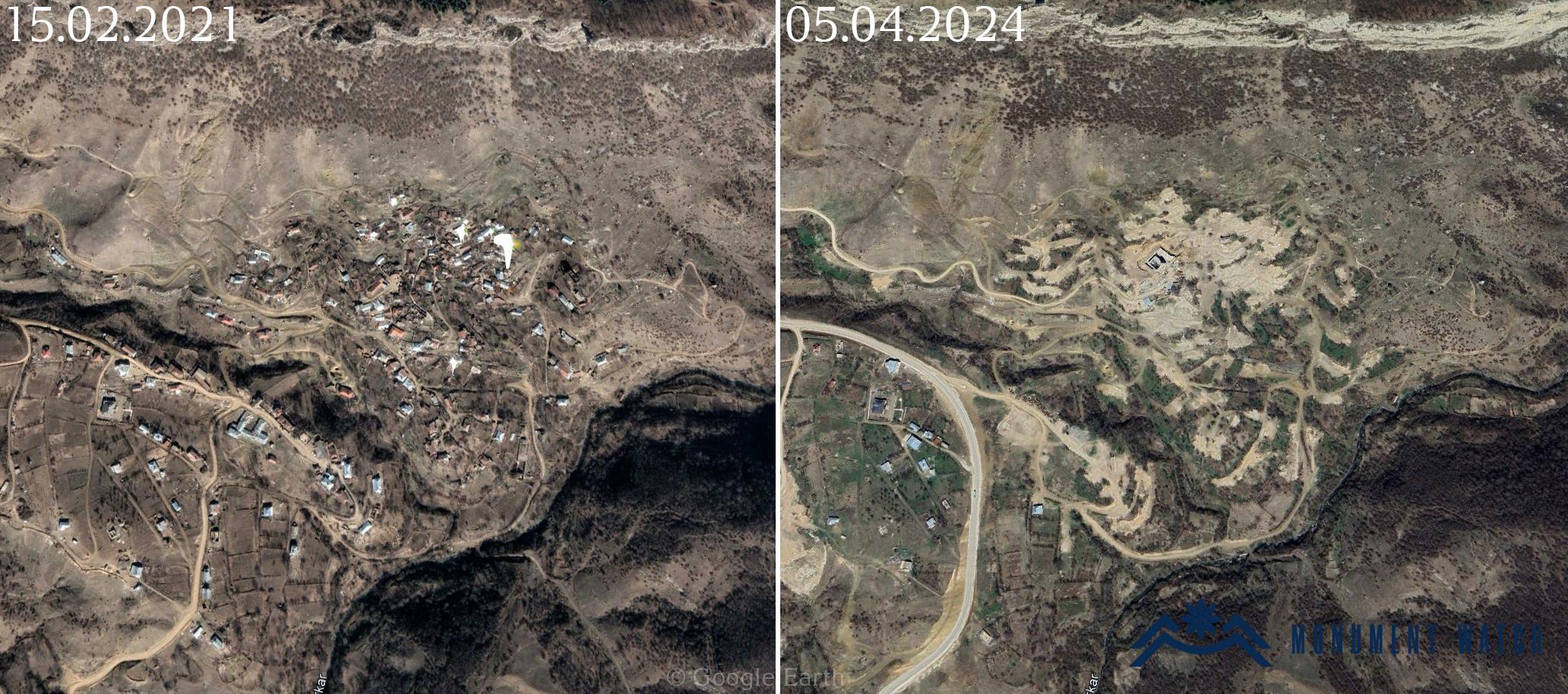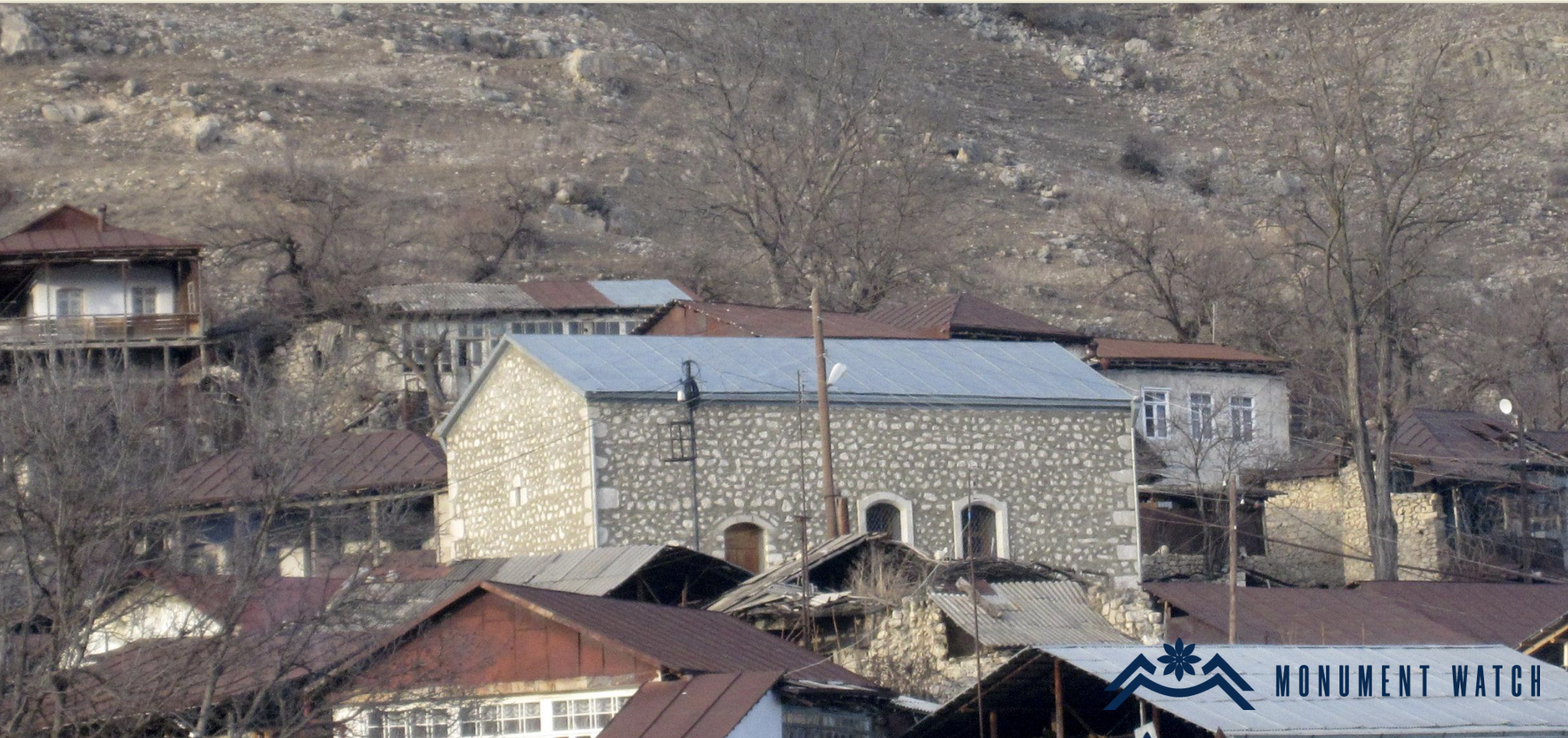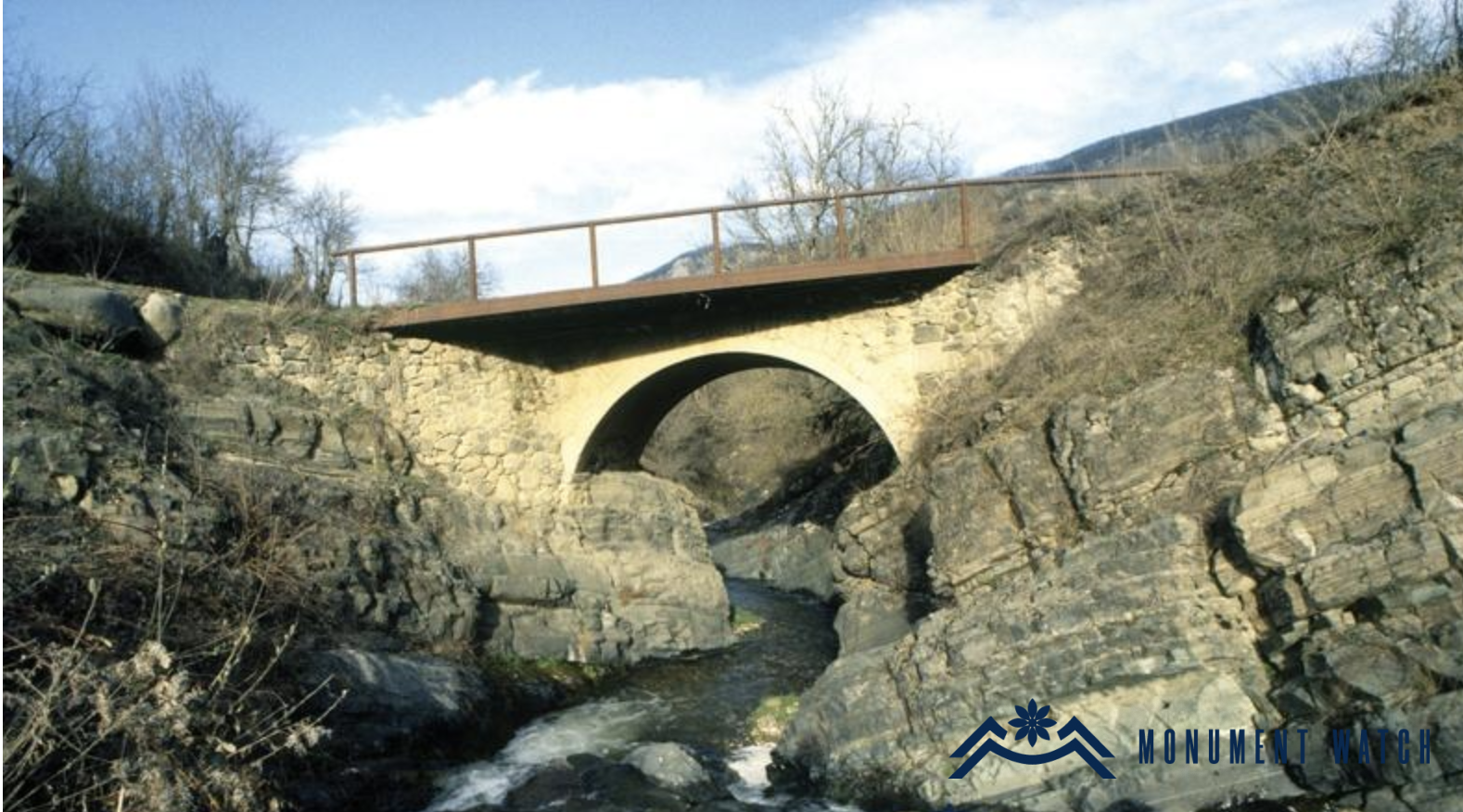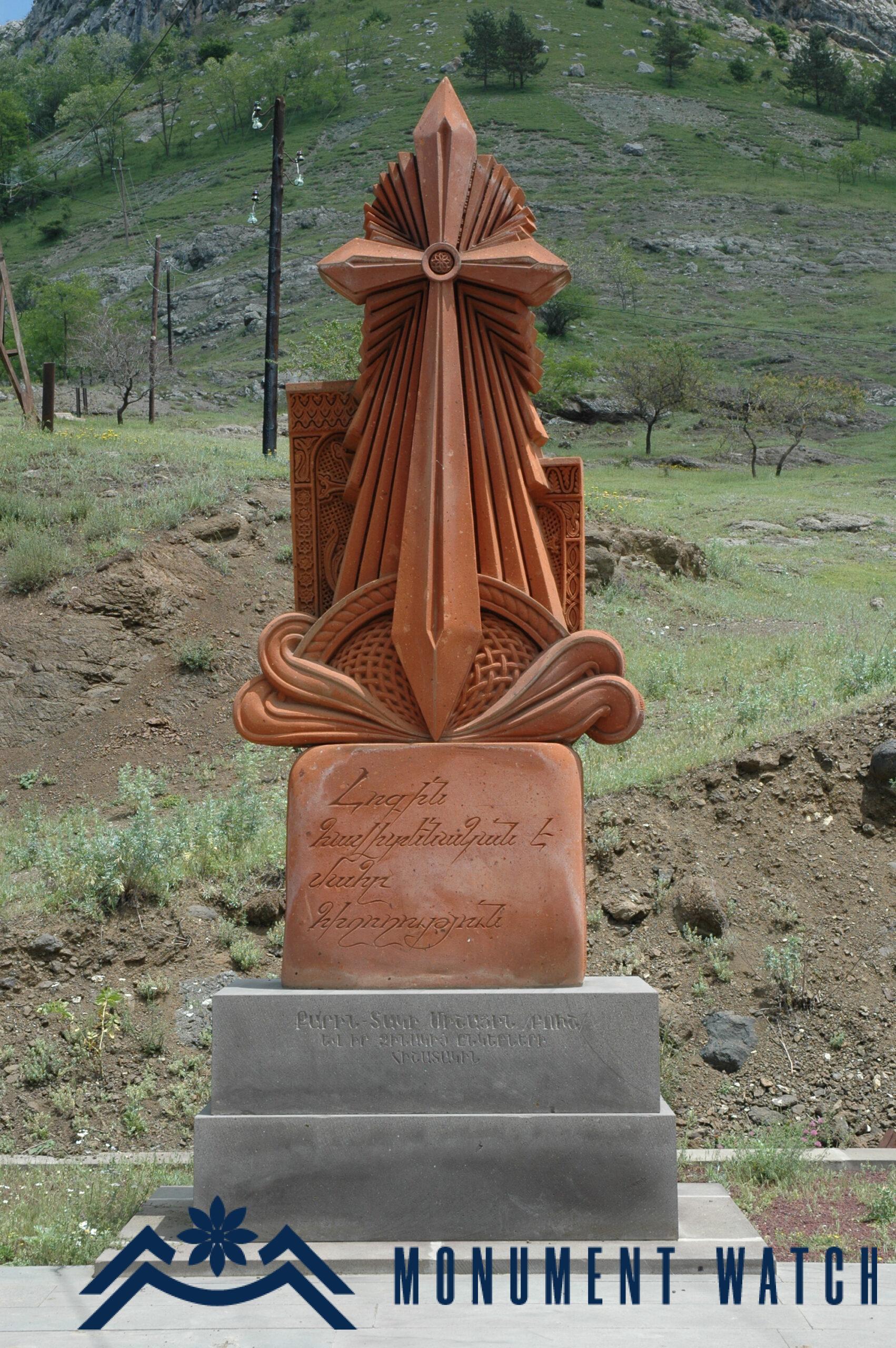Complete destruction of the village of Karintak by Azerbaijan
On April 5 of this year, the Google Earth satellite service updated the satellite images of the Askeran and Shushi regions. The Artsakh cultural heritage monitoring website team documented that Azerbaijan wrecked to the ground the village of Karintak in the Shushi region, including its old quarters, springs, civil infrastructure, and natural environment (Fig. 1).
Karintak village is located in the Shushi region of the Republic of Artsakh, directly beneath the vertical cliffs of Shushi city's southern part, on the left bank of the Karkar River.
Due to an act of vandalism, the World War II monument that was built in the center of the village was destroyed.
Several community centers such as the secondary school, the kindergarten, the cultural center, the health center, and the village hall were also destroyed. The Karintak branch of the SNCO "Shushi Children's Music School" was located in the village. Before the first Artsakh war, the village had 161 households and 701 inhabitants. As of 2019, the number of households remained the same, but the population decreased to 667 inhabitants.
In the territory of the settlement, which has been leveled to the ground, the Church of Surb Astvatsatsin, built in 1841, and the Simonents Bridge constructed by Hakob Simonyan on the Karkar River in 1838, still stand. According to satellite images, bulldozers and other equipment have not yet worked in the village cemetery.
It is important to note that following the 44-day war, the monument that was dedicated to the self-defense of Karintak from 1991 to 1994 was destroyed. In 2021, the President of Azerbaijan, Ilham Aliyev, announced his intentions to make changes to the historical and religious environment of the village, and on November 7 of the same year, a mosque was established in the village. Moreover, in 2022, an act of vandalism was committed, targeting the Surb Astvatsatsin Church of Karintak. The holy tabernacle was broken, and the ritual function was defiled.
Our response
Throughout its history, Karintak has had a purely Armenian population and a corresponding ethnic-religious Armenian environment. Even during the Soviet era, when the Azerbaijani authorities attempted to change the ethnic makeup of the region, Karintak remained populated exclusively by Armenians.
The destruction of the village by Azerbaijan during the war and throughout the occupation is a series of crimes that grossly violate international norms of wartime heritage protection as well as the principles of authenticity and integrity established by UNESCO. These actions are also in opposition to the decisions of the International Court of Justice.
The damage inflicted upon the village falls under the purview of the 1954 Hague Convention on the Protection of Cultural Property in Armed Conflict. Article 4 of the Convention, and additionally, 1999 Article 15(a) of the adopted Second Protocol, classifies such damage as a "serious violation," which can be prosecuted as a war crime in international courts https://www.arlis.am/DocumentView.aspx?DocID=31415.
The deliberate destruction of the historic houses and heritage in the village also violates Article 8 of the Rome Statute and is deemed a grave crime against humanity.



